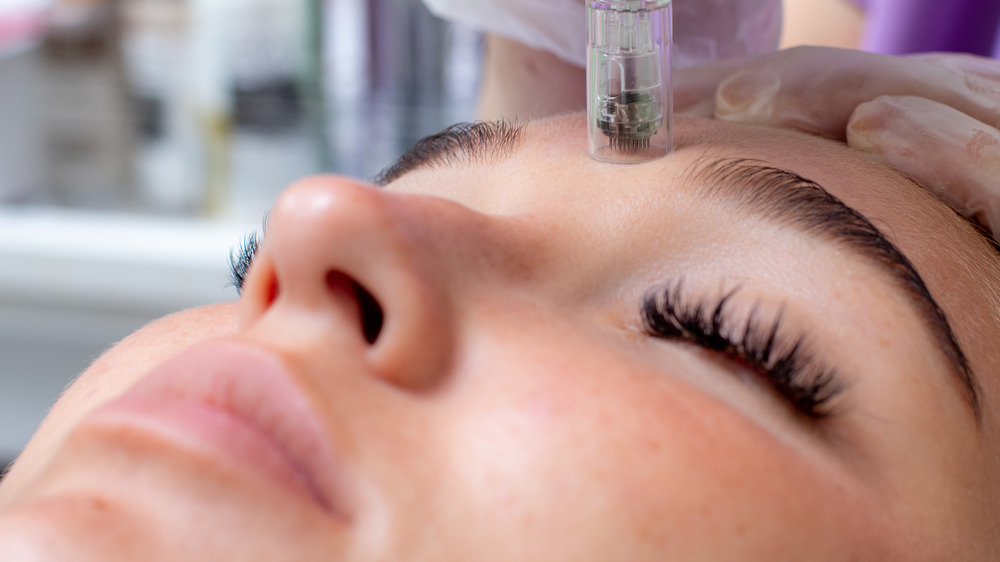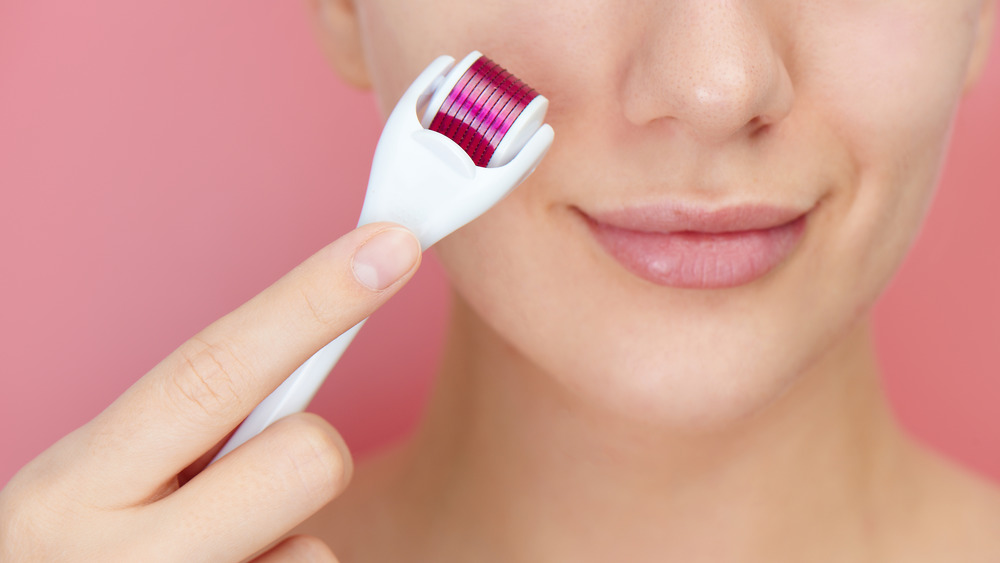What Microneedling Really Does To Your Skin
Great skin is always in! It exudes good health and gives us confidence to face the day ahead. So it's no wonder why we're willing to invest a pretty penny and subject ourselves to some mild discomfort (or intense pain) to achieve a face unmarked from time, blemishes, and scars. This is also why microneedling has become a highly requested procedure, as Elle credits it's increasing popularity to fans showing their results on YouTube and Instagram. Just what is microneedling? Sejal Shah, M.D., FAAD, a dermatologist at SmarterSkin Dermatology in New York tells Byrdie, "Microneedling is a collagen-stimulating treatment great for general skin rejuvenation. It treats textural issues dealing with pores, acne scars, wrinkles, saggy skin, and more," she says. Here's what this procedure really does to your skin.
This procedure may not be for those who aren't down with the "no pain, no gain" mantra. According to Elle, microneedling is just what the name implies. Hundreds of very thin and short "micro" needles are rolled onto the face with a device called a dermaroller. This creates mini puncture wounds all over the skin's surface. The sudden surface level damage done by the needles causes your skin's natural collagen production to be revved up, leaving the skin to look more plump and aluminous for a few weeks following the procedure.
Microneedling can be done at home
Even though this treatment sounds invasive (oh hello hundreds of needles!) you can actually choose to do it on yourself at home instead of a skincare specialist's office if you own a dermaroller. Dermatologist Mona Gohara, M.D. tells Elle, "If you're doing it at home, it's less effective, but you can do it as you please."
So how long will it take to feel comfortable showing off your post-punctured face to the world? Shah shares with Byrdie, "Afterward, there's a little bit of redness and might be some areas of pinpoint bleeding, but really, it's a no-downtime kind of treatment, so most people leave here a little bit red. A couple of hours later, you're pretty much back to normal, and the next day, you can resume your normal skincare and normal activities."
Before you book an appointment or attempt this at home, there are side effects to be aware of. Healthline says the potential risks include bleeding, bruising, peeling, and skin infections. You may also want to reconsider having this treatment done if you are pregnant, have a skin disease such as psoriasis or have recently had radiation therapy.
Sure, good skin is always in and we're intrigued by microneedling. But if needles have never been your friend, then you may want to check out the loads of other treatments the skincare industry offers.


